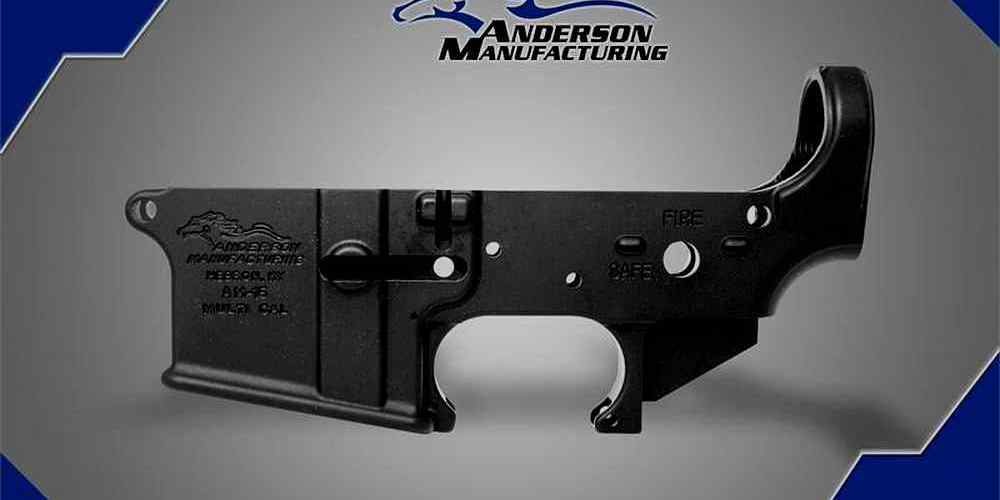“Optimized upper receiver design for enhanced recoil control and handling in AR15 rifles.”
Benefits of Lightweight Upper Receivers on AR15 Recoil
The AR15 is a popular rifle platform known for its versatility and customization options. One key component of the AR15 is the upper receiver, which plays a crucial role in the rifle’s recoil and handling characteristics. In this article, we will explore the impact of upper receiver design on AR15 recoil and handling, with a focus on the benefits of lightweight upper receivers.
When it comes to recoil, the weight of the upper receiver can have a significant impact on how the rifle handles. A heavier upper receiver can help reduce felt recoil by absorbing more of the energy generated by the firing of the round. However, a heavier upper receiver can also make the rifle feel more cumbersome and less maneuverable, especially in dynamic shooting situations.
This is where lightweight upper receivers come into play. By using materials such as aluminum or polymer, manufacturers are able to produce upper receivers that are significantly lighter than their steel counterparts. This reduction in weight can lead to a more nimble and agile rifle that is easier to handle and control, especially during rapid fire or when shooting on the move.
In addition to improved handling, lightweight upper receivers can also have a positive impact on accuracy. The reduced weight of the upper receiver can help minimize muzzle rise and barrel whip, allowing for faster follow-up shots and tighter shot groups. This can be especially beneficial for competitive shooters or those who rely on their AR15 for hunting or self-defense purposes.
Another benefit of lightweight upper receivers is their impact on overall rifle weight. By reducing the weight of the upper receiver, shooters can create a more balanced and comfortable rifle that is easier to carry and maneuver for extended periods of time. This can be particularly important for hunters or law enforcement officers who may need to carry their rifle for long distances or extended periods of time.
It is important to note that while lightweight upper receivers offer many benefits, they may not be suitable for all shooters or applications. Some shooters may prefer the added weight and stability of a heavier upper receiver, especially for precision shooting or long-range engagements. Additionally, lightweight materials may not be as durable or long-lasting as steel, so shooters should consider their intended use and shooting conditions when selecting an upper receiver.
In conclusion, the design of the upper receiver plays a crucial role in the recoil and handling characteristics of the AR15. Lightweight upper receivers offer a number of benefits, including improved handling, accuracy, and overall rifle weight. Shooters should carefully consider their shooting style and preferences when selecting an upper receiver to ensure they get the best performance from their AR15.
How Different Upper Receiver Materials Affect AR15 Handling
The AR15 is a popular rifle platform known for its versatility and modularity. One key component of the AR15 is the upper receiver, which plays a crucial role in the rifle’s overall performance. The design and material of the upper receiver can have a significant impact on the rifle’s recoil and handling characteristics.

When it comes to upper receiver design, there are two main types: forged and billet. Forged upper receivers are made by hammering a solid piece of aluminum into shape, while billet upper receivers are machined from a solid block of aluminum. Each type of upper receiver has its own set of advantages and disadvantages when it comes to recoil and handling.
Forged upper receivers are known for their strength and durability. The forging process creates a dense and uniform grain structure in the aluminum, making it less prone to cracking or failure under stress. This added strength can help reduce felt recoil and improve overall handling, as the upper receiver is better able to absorb and dissipate the energy generated by firing the rifle.
On the other hand, billet upper receivers are often praised for their precision and customization options. Because they are machined from a solid block of aluminum, billet upper receivers can be made with more intricate designs and features than forged upper receivers. This can allow for a more ergonomic and comfortable shooting experience, which can in turn help improve handling and reduce felt recoil.
In addition to design, the material used to make the upper receiver can also have a significant impact on recoil and handling. The most common material used for AR15 upper receivers is aluminum, specifically 7075-T6 aluminum. This type of aluminum is known for its high strength-to-weight ratio, making it an ideal choice for rifle components.
Aluminum upper receivers are lightweight and durable, making them a popular choice among AR15 enthusiasts. The lightweight nature of aluminum can help reduce overall rifle weight, which can in turn help improve handling and reduce fatigue during extended shooting sessions. Additionally, the durability of aluminum can help ensure that the upper receiver can withstand the rigors of regular use without failing or deforming.
Another material that is gaining popularity for AR15 upper receivers is polymer. Polymer upper receivers are lightweight and affordable, making them an attractive option for budget-conscious shooters. However, polymer upper receivers are not as strong or durable as aluminum, which can impact their ability to handle recoil and maintain accuracy over time.
In conclusion, the design and material of the upper receiver can have a significant impact on AR15 recoil and handling. Forged upper receivers are known for their strength and durability, while billet upper receivers offer precision and customization options. Aluminum upper receivers are lightweight and durable, while polymer upper receivers are lightweight and affordable. Ultimately, the best upper receiver for your AR15 will depend on your specific needs and preferences.
The Role of Upper Receiver Length in Recoil Management
The AR15 is a popular rifle platform known for its versatility and modularity. One key component of the AR15 is the upper receiver, which plays a crucial role in the rifle’s recoil management and handling characteristics. The design of the upper receiver can have a significant impact on how the rifle handles recoil, making it an important consideration for shooters looking to optimize their AR15’s performance.
One factor that can influence recoil management is the length of the upper receiver. A longer upper receiver can provide a longer sight radius, which can help improve accuracy and reduce felt recoil. The increased length also allows for a longer handguard, which can provide more space for accessories such as lights, lasers, and grips. Additionally, a longer upper receiver can help balance the rifle better, making it easier to control during rapid fire.
On the other hand, a shorter upper receiver can make the rifle more compact and maneuverable, which can be advantageous in close-quarters situations. However, a shorter upper receiver may also result in increased felt recoil, as there is less space for the gas system to operate and dissipate recoil energy. Shooters looking for a balance between compactness and recoil management may opt for a mid-length upper receiver, which offers a compromise between the two extremes.
Another factor to consider when it comes to upper receiver design is the material used in its construction. Aluminum is the most common material for AR15 upper receivers, as it is lightweight and durable. However, some shooters may opt for a steel upper receiver for added strength and rigidity. Carbon fiber upper receivers are also available, offering a lightweight and rigid option for shooters looking to reduce weight without sacrificing durability.
In addition to length and material, the design of the upper receiver can also impact the rifle’s overall handling characteristics. For example, a flat top upper receiver allows for the mounting of optics, which can improve accuracy and target acquisition. A forward assist can help ensure reliable chambering of rounds, while a shell deflector can redirect ejected casings away from the shooter.
Ultimately, the best upper receiver design for an AR15 will depend on the shooter’s preferences and intended use for the rifle. Shooters looking for maximum recoil management may opt for a longer upper receiver, while those prioritizing compactness may prefer a shorter upper receiver. The material used in the upper receiver can also impact its performance, with aluminum, steel, and carbon fiber each offering their own advantages and disadvantages.
In conclusion, the design of the upper receiver plays a crucial role in the recoil management and handling characteristics of an AR15. Factors such as length, material, and features can all impact how the rifle performs in terms of recoil control, accuracy, and overall handling. By carefully considering these factors and choosing an upper receiver design that aligns with their preferences and needs, shooters can optimize the performance of their AR15 and enhance their shooting experience.
Improving AR15 Recoil Control with Enhanced Upper Receiver Designs
The AR15 is a popular rifle platform known for its versatility and modularity. One key component of the AR15 is the upper receiver, which plays a crucial role in the rifle’s recoil control and handling. The design of the upper receiver can have a significant impact on how the rifle performs in terms of recoil management and overall shootability.
One important factor to consider when looking at upper receiver design is weight. A heavier upper receiver can help reduce felt recoil by absorbing more of the energy generated by the firing of the round. This can result in a smoother shooting experience and improved accuracy, especially during rapid fire or sustained shooting sessions. On the other hand, a lighter upper receiver may be more maneuverable and easier to handle, but it may also result in increased felt recoil.
Another aspect of upper receiver design that can affect recoil control is the material used. Aluminum is a common material for AR15 upper receivers due to its lightweight and durable properties. However, some manufacturers are now offering upper receivers made from alternative materials such as polymer or steel. These materials can offer different levels of recoil absorption and may affect the overall handling of the rifle.
In addition to weight and material, the shape and design of the upper receiver can also impact recoil control. Some upper receivers feature enhanced features such as extended handguards, integrated rail systems, or angled cuts to reduce weight and improve ergonomics. These design elements can help shooters better manage recoil and maintain control of the rifle during shooting.
One popular trend in upper receiver design is the use of monolithic upper receivers. These one-piece designs offer increased rigidity and stability, which can help improve accuracy and reduce felt recoil. Monolithic upper receivers also often feature integrated rail systems for mounting accessories such as optics, lights, and grips, making them a versatile option for shooters looking to customize their rifle.
Another design feature that can impact recoil control is the presence of a forward assist. While not directly related to recoil management, a forward assist can help ensure reliable chambering of rounds, which can be important for shooters looking to maintain control of their rifle in high-stress situations.
Overall, the design of the upper receiver plays a crucial role in how an AR15 handles recoil and overall shootability. Shooters looking to improve their recoil control may want to consider factors such as weight, material, shape, and design when selecting an upper receiver for their rifle. By choosing an upper receiver that is well-suited to their shooting style and preferences, shooters can enjoy a more comfortable and accurate shooting experience with their AR15.
Custom Upper Receiver Options for Optimizing AR15 Handling
When it comes to customizing your AR15, one of the most important components to consider is the upper receiver. The upper receiver plays a crucial role in the overall performance of your rifle, affecting everything from recoil management to handling. By understanding how different upper receiver designs can impact these factors, you can make informed decisions when choosing the right setup for your needs.
One of the key factors to consider when selecting an upper receiver is weight. A heavier upper receiver can help reduce felt recoil by absorbing more of the energy generated by the firing of the rifle. This can result in a smoother shooting experience and improved accuracy, especially during rapid fire or extended shooting sessions. On the other hand, a lighter upper receiver can make the rifle easier to handle and maneuver, which can be beneficial in certain shooting scenarios.
Another important consideration is the material used in the construction of the upper receiver. Aluminum is the most common material used for AR15 upper receivers due to its lightweight and durable properties. However, there are also options available in materials such as steel or polymer, each with its own set of advantages and disadvantages. Steel upper receivers are heavier and more robust, making them ideal for high-stress applications, while polymer upper receivers are lightweight and affordable, but may not offer the same level of durability as metal options.
The design of the upper receiver can also impact the overall handling of the rifle. For example, a flat top upper receiver with a Picatinny rail allows for the attachment of various optics and accessories, giving you more flexibility in customizing your setup. A forward assist feature can help ensure reliable chambering of rounds, while a shell deflector can redirect ejected casings away from the shooter, improving comfort and safety during shooting.
In addition to these factors, the length of the upper receiver can also affect the handling of the rifle. A longer upper receiver can provide a longer sight radius, which can improve accuracy at longer distances. However, a shorter upper receiver can make the rifle more compact and easier to maneuver in tight spaces. Ultimately, the choice between a longer or shorter upper receiver will depend on your shooting preferences and intended use for the rifle.
When selecting a custom upper receiver for your AR15, it’s important to consider how each design element will impact the overall performance of the rifle. By choosing the right combination of weight, material, design, and length, you can optimize your AR15 for improved recoil management and handling. Whether you’re looking to reduce felt recoil for more comfortable shooting or enhance the maneuverability of your rifle for tactical applications, there are custom upper receiver options available to suit your needs. Take the time to research and compare different options to find the perfect setup for your AR15.




